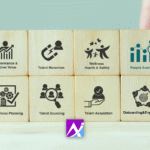It is natural to feel more disconnected in a remote work environment. How can teams effectively work together, be engaged and connect if they are never physically together? Virtual tools for video conferencing and instant messaging are helpful, but they don’t independently make up for the advantages of being physically together. However, there are things that you can do to make up for their shortcomings by being targeted in your approach to addressing this issue.
You can begin by building a relationship founded on trust. Building relationships with your team and among your team will create an environment where people care more about how their work impacts others. Building rapport and getting to know one another as people and not just coworkers will increase engagement, which will create a corresponding increase in motivation. The foundation needs to be securely rooted in trust. Building a relationship isn’t about how often you reach out. It is about the quality and intent of the connection. Reaching out constantly and micromanaging can destroy trust. It sends the signal that you don’t believe they will do the work on their own. Even if you do have performance problems with an employee, micro-managing isn’t the solution.
Shift your meetings and routines away from focusing exclusively on tactical work. Instead, focus on the big picture connections, like collaborative problem solving, successes and opportunities, potential experiments or new methods to try, and vision and strategy development.
You can also gather data to help you understand and measure motivation within your team. One way to do that is by conducting surveys to measure motivation. Surveys are an anonymous way for your team to report to you how they’re feeling. Knowing how your employees are wired will also help you better understand the internal driving forces of your team. You can figure out how your employees are wired and how the wiring impacts their motivation by conducting data-driven personality assessments.
Remote and hybrid work environments are going to be more prevalent in the modern workplace. Organizations and leaders need to adapt their traditional styles to be able to better prepare for the unique challenges and approaches to motivation that work best in those work environments.
How to Motivate Remote Employees





